|
Getting your Trinity Audio player ready...
|
When I moved to Chiang Mai, people I left behind in the South often asked questions like, does lamyai grow in Northern Thailand? Of all the fruit in Thailand, there seems to be a proliferation of lamyai fruit in Chiang Mai province. Since 2015 I have seen rai upon rai of rice paddies converted to lamyai farms.
July and August are the annual harvest months for lamyai fruit in Northern Thailand. The succulent, aromatic fruit is the product of forests of trees in the provinces of Chiang Mai and Chiang Rai. Traditionally the fruit was grown on dry, rocky hillsides, but today you will find many orchards in the low wetlands and old rice paddies. You will find it sold on the stalks in market stalls all over Thailand for couple of months each year. Crack open the thin crusty skin and the delicious pale pearly flesh will pop out.
In the middle of the monsoon, there are enough breaks in the downpours for the farmers to pick the ripe fruit.
Some years yield poor harvests, despite the best endeavours of the farmers. The monsoon maybe late, and the lamyai fruit, though ripe, doesn’t fatten enough. The work has to be done, but there is no guarantee where the price dealers will pay for the lamyai fruit will end up.
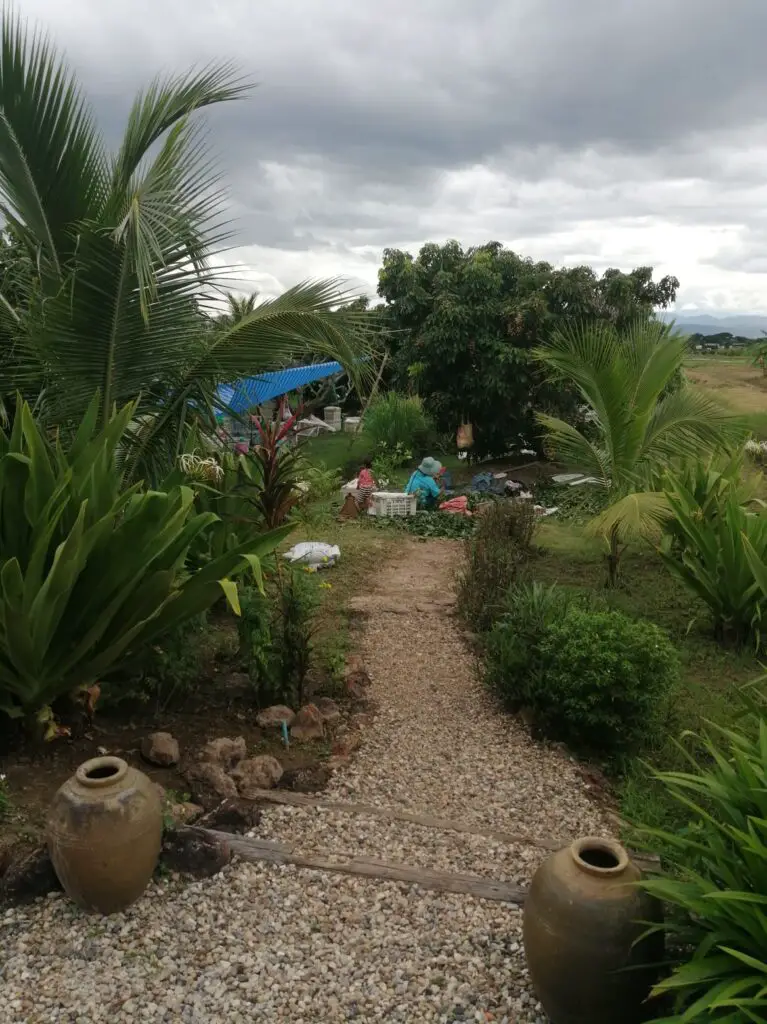
Lamyai is price sensitive
If the monsoon is late, and the fruit doesn’t fatten enough, there are many long faces. When the price per kilo the wholesalers are prepared to pay the farmers goes below the average, it can go as low as 12 baht. The farmers have no option but to accept the price offered or let the fruit rot on the trees. Leaving it on the trees for longer in the hope it fattens and the price goes up is a gamble many take. Casual labour at 300 baht a day makes it difficult to see how anyone can make much of a profit if any. The fruit from one tree that would normally yield 600 baht may only fetch 450 baht in a bad year. So that 150 baht lost is equivalent to half a day’s work.
Taking care of lamyai fruit will produce more
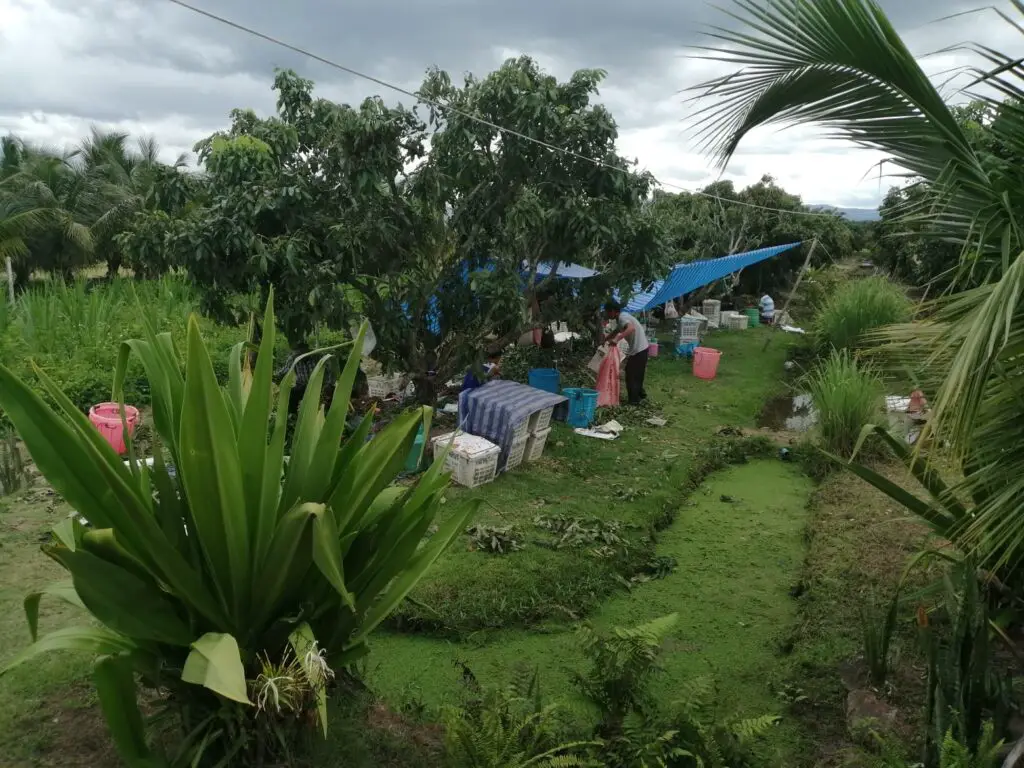
Taking care of the trees throughout the year produces more and fatter lamyai fruit. Those farmers who work hard, water and feed their trees, will make money where others don’t. Dealers who use teams of Tai-Yai labourers scour the farms in search of good fruit. Then they look for farmers who don’t have the labour or wherewithal to do the hard graft of picking, packing and getting the fruit to wholesalers.
Hill-side Farms
The bigger farms are on the hillsides where land is cheaper, rocky, and there is less water. It is generally difficult and not cost effective to grow rice or vegetables on such land. Those are the farmers who suffer more in a bad year, as Lamyai is their main, if not only, source of income.
A farmer with 500 or more trees could be looking at a gross loss of 75,000 baht. And no saving on labour or maintenance costs. Others in the valley may be considered luckier. They get enough water for two rice crops with vegetables in between. The Lamyai farmers will lose out but, fortunately, they are not totally reliant on the fruit.
Collection Points for Lamyai fruit in Thailand
Lamyai trees typically take three years from planting to reach maturity and yield their first fruit. It is a long investment time involving a lot of hard work. Feeding, watering and maintaining the trees in good health before any returns are seen is vital.
A collection station is set up in most villages, where once a day the farmers bring the fruit to be graded and sold. The fruit is trucked to a central distribution depot, packaged and transported to markets all over Thailand.
Lamyai fruit farmers in Thailand cannot kick the habit of burning anything they don’t want. Despite repeated government warnings and penalties which are seldom enforced. So, just as it is in the dry season, fires pollute the air of North Thailand during August. But then with the smoke from burning Lamyai stalks and leaves.


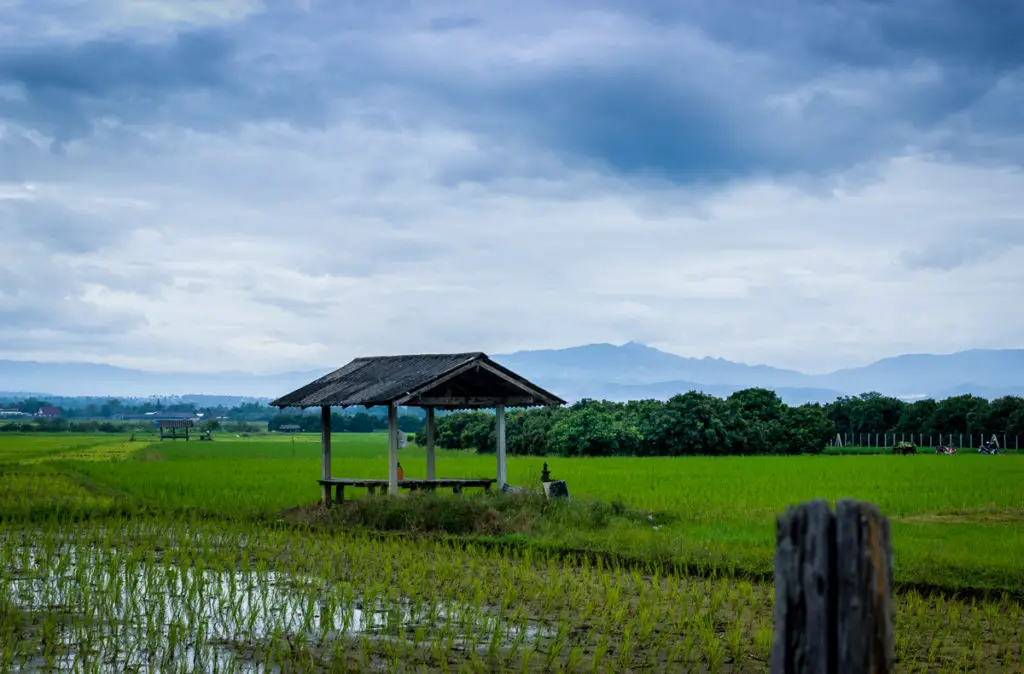
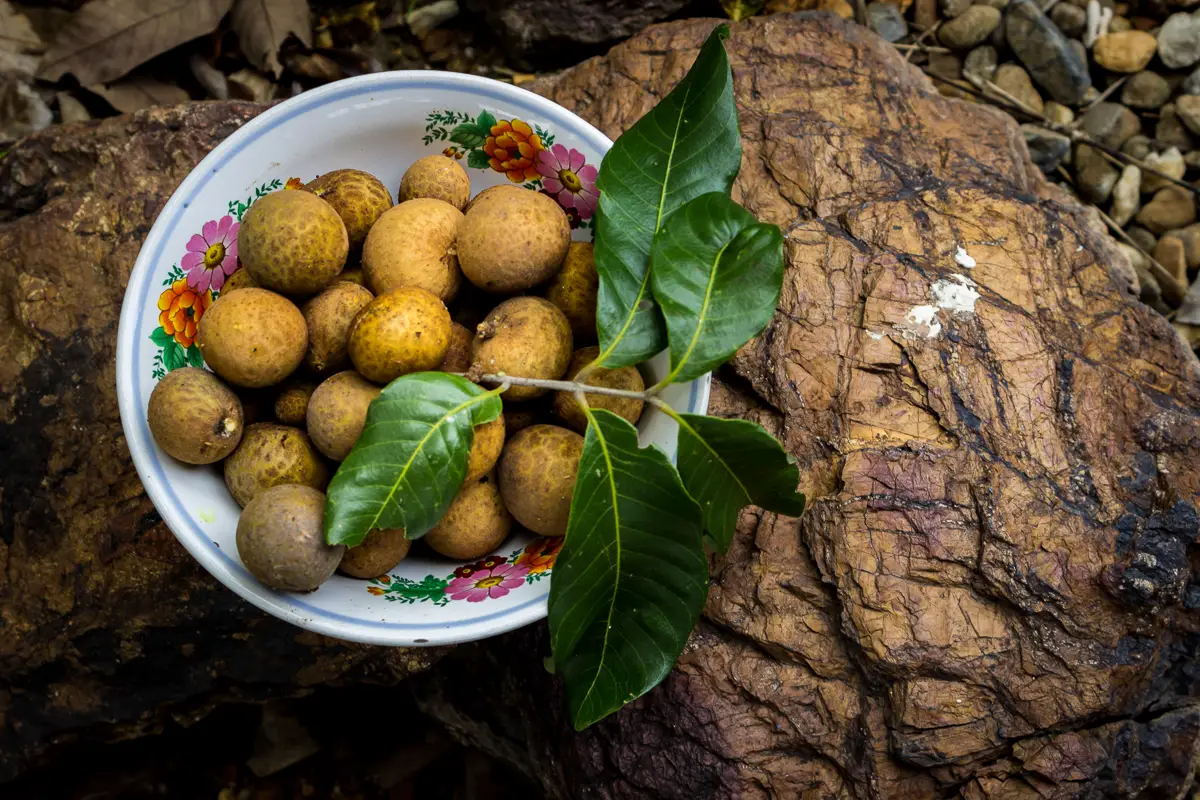
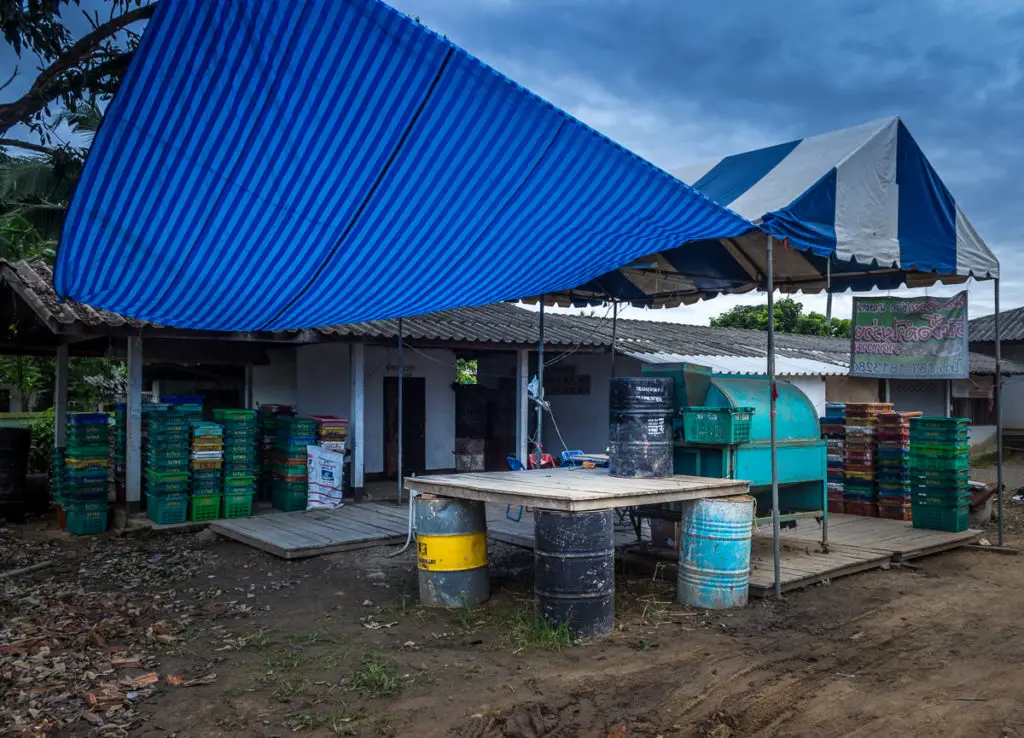
Thanks. I’m upset, because my camera is at the menders, and I have action all around me I can’t capture. Fruit pickers, rice planters, and tropical storms.
Wonderful photos!
Very, must be just the “Follow” button then.
Have a good one!
That is weird, Nilla. I checked. You are listed on my blog followers. I knew before I checked because I am sending out emails to selected people at the moment. You should get one in the next week. Don’t bin it!!! Keep travelling.
Interesting article James!
Not sure what is wrong…I’ve followed your blog numerous times, but always displays as not followed – very weird.
I WANT BUY LAM YAI HUGE QUANTITY CAN YOU SEND ME NUMBER ADDRESS
Longans.. how I miss this fruit 🙂
No Golde. It’s flesh is the same colour but the taste is less succulent. Lychee or Litchi as they are known here are very juicy. Lam Yai is less so and smaller. James
is this what we call lychee in Hawaii?….